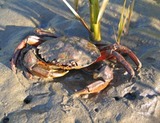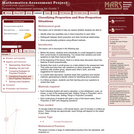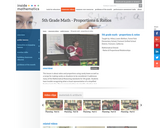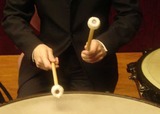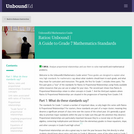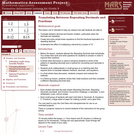
The purpose of this task is to give students the opportunity to use mathematics in real-world applications. In this task, students are introduced to the ongoing problem of affordable housing faced by state and national community builders and city planners. Students are presented with two data tables illustrating cost of housing and wage increases over 20 years. Students discuss questions they can ask and answer using this data. They will calculate the cost increase of housing over time and compare it to wage increase, concluding with a discussion about the comparison. Includes slides to support the implementation of "Housing Our Community (Grades 3-5)" Math Performance Task with charts, images, etc.
- Subject:
- Elementary Education
- Environmental Science
- Measurement and Data
- Numbers and Operations
- Ratios and Proportions
- Material Type:
- Activity/Lab
- Author:
- Pacific Education Institute
- Date Added:
- 11/15/2023

